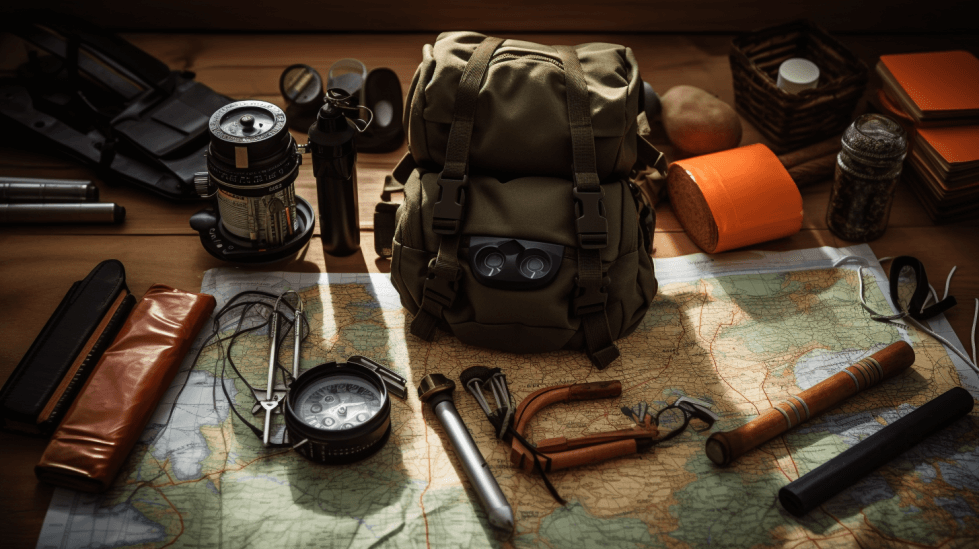Survival Preparedness for Beginners
Survival preparedness is an essential skill set that every individual should learn and practice to ensure their safety during unexpected situations. Beginners may feel overwhelmed with various survival techniques, tools, and strategies, but fear not! I am here to provide you with a solid foundation to help you get started on your journey towards becoming well-prepared for whatever life may throw at you.
As a beginner, it’s crucial to understand the basic principles of survival and know how to prioritize your needs in an emergency situation. Additionally, comprehending various emergency scenarios can help you effectively plan and adapt your preparedness strategies accordingly. Building a survival kit, understanding food and water storage, and learning how to avoid common mistakes are just a few key steps that beginners can take to become proficient in survival preparedness.
Key Takeaways
- Gain an understanding of basic survival skills and principles
- Prioritize building a well-rounded survival kit and a plan for emergency scenarios
- Learn from common mistakes to strengthen your preparedness strategies
Understanding Survival Preparedness
Importance of Preparedness
In my experience, survival preparedness plays a crucial role in ensuring our well-being and safety during emergency situations. Being prepared for emergencies helps reduce panic and anxiety, allowing us to make better decisions and ultimately increase our chances of survival. Natural disasters and other types of emergencies can strike at any time, so it’s essential to have a plan in place and always be ready for the unexpected.
According to the United States Government, every household should have an emergency plan and be familiar with the necessary steps to take during a crisis. By taking the time to prepare and gather essential supplies, we can mitigate the risks associated with emergencies and restore normalcy more quickly.
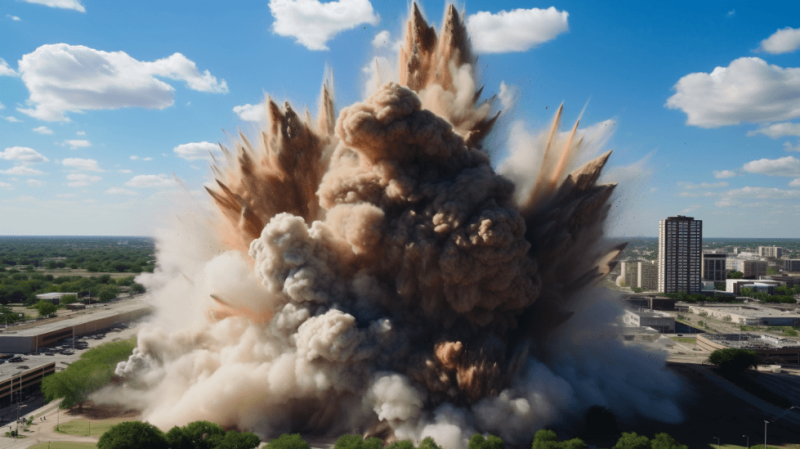
Preparing for Different Types of Emergencies
As I learned in my journey, there are various types of emergencies we might face, including natural disasters (such as hurricanes, earthquakes, and floods), man-made incidents (like terrorist attacks, power outages, and chemical spills), and personal emergencies (like medical issues or losing a job). Each of these situations requires different responses and preparations.
Some essential steps to consider when preparing for emergencies include:
- Developing a comprehensive emergency plan for your household
- Gathering necessary supplies, such as food, water, and first aid kits
- Practicing your plan and adjusting it as needed
It is crucial to remember that while some preparations will be universal, others will be specific to the type of emergency. For example, you would need different supplies and strategies to cope with an earthquake compared to a pandemic. Always do your research to tailor your preparedness plan to the specific emergencies relevant to your area and situation.
Times of Crisis
During times of crisis, survival preparedness becomes even more critical. In challenging situations, I have noticed how essential it is to have a clear and well-formulated plan and the right mindset to overcome obstacles. This means not only being familiar with our emergency plan but also keeping a steady mind and remaining flexible as situations evolve.
In addition to the practical aspects of preparedness, it’s essential to focus on our mental well-being. Staying calm, collected, and confident during an emergency can improve our decision-making and help us navigate through the crisis more effectively.
Being proactive about survival preparedness is the key to safeguarding ourselves and our families during emergencies. By recognizing the importance of preparedness and taking steps to be ready for different types of emergencies, we can better face challenging situations and improve our chances of a successful outcome.

Basic Survival Skills
As a beginner in survival preparedness, it’s essential to start with basic survival skills. In this section, I will cover some fundamental skills, focusing on First Aid Fundamentals and Essential Survival Skills. These skills can make a significant difference in emergency situations.
First Aid Fundamentals
One of the most valuable skills I believe everyone should learn is first aid. Being able to quickly address injuries can prevent further complications and even save lives. For this reason, I always carry a first aid kit with me. Some essential items to include in a first aid kit are:
- Adhesive bandages
- Gauze pads
- Antiseptic wipes
- Pain relievers
- Tweezers
- Medical tape
- Scissors
It’s also crucial to know how to perform CPR, treat burns, and recognize the signs of a heart attack or stroke. Take the time to attend a first aid course or learn from reliable online resources to build confidence in your abilities.
Essential Survival Skills
Apart from first aid, there are several other survival skills that I find important for beginners to master. These include:
- Fire starting: Knowing how to start a fire is crucial in a survival situation as it provides warmth, light, and a means to cook food. Practice different fire-starting techniques, such as using matches, lighters, or a fire starter.
- Water purification: Finding and purifying water is a fundamental survival skill. Learn about water purification tablets and other methods like boiling or using a water filter.
- Navigation: In an emergency, you might not have access to your smartphone or GPS device. Hence, learning to navigate using a map and compass is a practical skill to have in your arsenal.
- Shelter building: Constructing a basic shelter can protect you from the elements and help conserve body heat. Familiarize yourself with simple shelter designs, like lean-tos or debris huts.
- Signaling for help: Master the essential techniques for signaling for help, such as using a whistle, a signal mirror, or creating a signal fire.
By developing these survival skills and first aid fundamentals, I increase my chances of staying safe and self-reliant in emergency situations. Make sure to continuously practice and refine these skills to be well-prepared for any challenges that may arise.
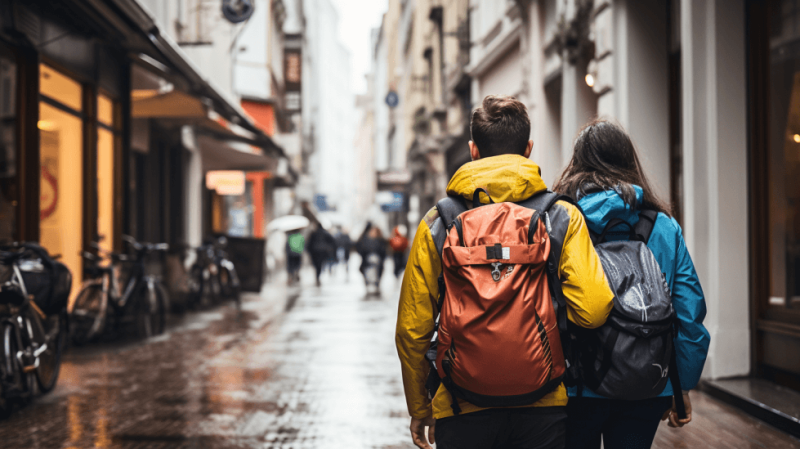
Planning for Survival Preparedness
Starting an Emergency Preparedness Journey
I know that beginning your survival preparedness journey can seem like a daunting task. The good news is, there is a simple plan to set you on the right path. I recommend starting by focusing on your immediate needs in case of an emergency.
- First, build a solid personal finance and health foundation. This includes saving money for unexpected events and maintaining your physical and mental well-being.
- Next, ensure that your home is prepared for emergency situations. This means stocking up on essential supplies, such as food, water, medications, and first aid items, to last at least two weeks.
- One crucial aspect of preparedness is creating a “bug out bag” that can be easily grabbed should you need to evacuate your home in a moment’s notice. This bag should contain essentials such as:
- Food/water
- Clothes
- Shelter
- First aid kit
- Important documents
Remember to update and maintain your bug out bag regularly.
Long Term Survival Preparation
Long-term survival planning involves taking into consideration various factors to ensure self-sufficiency and safety in more extended emergencies. Here are some steps to guide you:
- Identify potential risks in your area (natural disasters, man-made threats, etc.) and devise a plan for dealing with each one.
- Develop a long-term survival plan that includes essentials such as:
- A backup power source
- Water purification system
- Renewable food sources (gardening, livestock, etc.)
- Adequate stockpiles of necessary supplies
- An effective communication plan
- Continuously improve your core skills, such as first aid, outdoor survival techniques, and self-defense, through regular training and practice.
- Collaborate with like-minded individuals who also prioritize preparedness. Build a supportive and strong community.
- Regularly evaluate your long-term survival plan for its effectiveness and make adjustments as needed.
By following these guidelines, I am confident that my emergency preparedness journey will be less daunting, and I will be better equipped to face various scenarios.
Building Your Survival Kit
When it comes to survival preparedness, building a reliable survival kit is crucial. In this section, I will walk you through choosing necessary supplies and creating a bug-out bag to ensure you’re well-equipped for any emergency situation.
Choosing Necessary Supplies
The first step in building a survival kit is identifying the proper supplies needed to sustain you and your loved ones during an emergency. Some essential items to consider for your survival kit include:
- Water: Ensure you have at least one gallon of water per person, per day, for at least three days.
- Food: Stock non-perishable, easy-to-prepare food that can last for a minimum of three days.
- First Aid Kit: Make sure to have basic first aid supplies, such as band-aids, gauze, and antiseptic wipes.
- Medications: Keep a supply of essential prescription and over-the-counter medications.
- Tools: Pack essential tools like a multi-tool, a flashlight with extra batteries, and a whistle for signaling help.
- Shelter: Include a compact emergency blanket and a small tarp for staying warm and dry.
Always keep your survival kit in an easily accessible location where you can quickly grab in the event of an emergency. Additionally, I recommend that you check and update your kit every six months to ensure everything is in good condition and medication hasn’t expired.
Creating a Bug-Out Bag
A bug-out bag (BOB) is a portable kit that contains essential everyday carry items (EDC) and additional survival gear to help you quickly evacuate and survive in emergency situations. When assembling a bug-out bag, follow these guidelines:
- Choose the right bag: Select a durable and comfortable backpack with enough capacity to hold your EDC items and survival gear.
- Pack EDC items: Some essential EDC items include a wallet, keys, phone, charger, pocketknife, and a miniature first aid kit.
- Consider personal needs: Remember to pack items specific to your personal needs, like baby supplies, pet food, or essential documents.
Finally, regularly check your bug-out bag and update its contents according to your changing needs. Keep your BOB in an easily accessible place, so you can grab it and go at a moment’s notice.
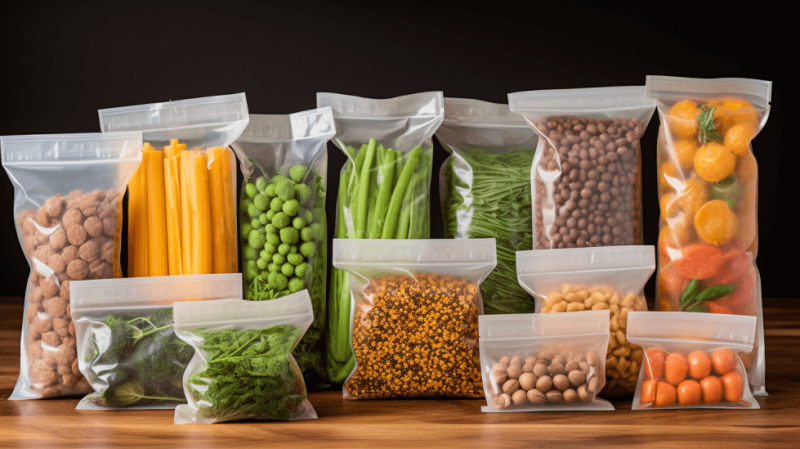
Food and Water Storage
Best Ways to Store Food
From my experience, higher food prices and scarcity at grocery stores make it incredibly important to store food properly. I always focus on having a mix of shelf-stable food items. To begin, I like to purchase items from dollar stores, as these are often more affordable. My food storage consists of canned goods, dry grains like rice and pasta, and freeze-dried or dehydrated fruits and vegetables.
Moreover, I use vacuum-sealed bags and airtight containers to prolong my food’s shelf life. I place them in a cool, dry, and dark location since heat, moisture, and light can damage the quality of long-term food storage. Proper organization of the food storage area is essential, too. I make sure to label and date all food items, and I practice the “first-in, first-out” method to ensure that I use the oldest items first.
Storing Water for Long Term
When it comes to water storage, I’ve found that having enough supply for at least three weeks is a good place to start. As a rule of thumb, I store one gallon of water per person per day. It’s essential to use sturdy and food-grade containers, like BPA-free water jugs, to prevent contamination.
I usually opt for repurposing 2-liter soda bottles or Arizona iced tea jugs; however, I avoid using thin-walled containers, such as milk jugs, as they can easily leak or break. To maintain the quality of water, I store it in a cool and dark area, away from direct sunlight.
In summary, adequate food and water storage is crucial for better survival preparedness. I focus on finding affordable, shelf-stable food items from dollar stores and maintaining proper storage conditions. For water storage, having enough supply for at least three weeks is vital, and using suitable, food-grade containers is a must. By following these practices, I feel confident and knowledgeable in my preparedness efforts.
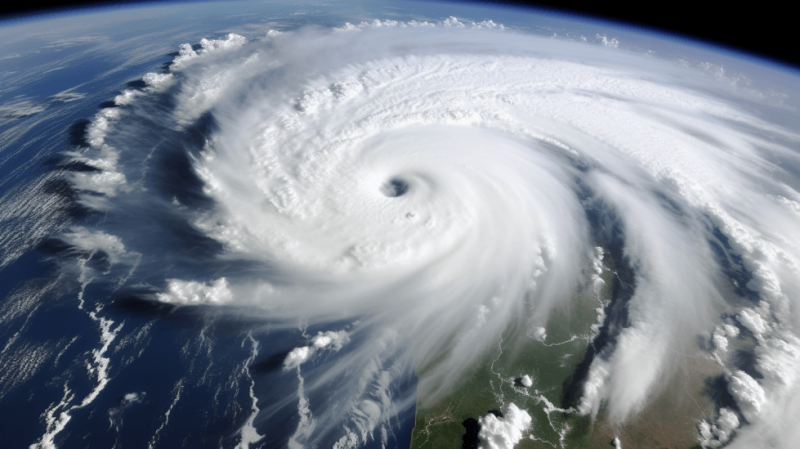
Emergency Scenarios and How to Handle Them
Natural Disasters Preparedness
In order to be prepared for natural disasters such as hurricanes, floods, and earthquakes, I recommend having a basic emergency preparedness kit on hand. This should include items like:
- Non-perishable food
- Water
- Flashlights and batteries
- First aid supplies
I also recommend having an evacuation plan, including a designated meeting place and a communication plan in case of separated family members. I believe staying informed about weather conditions and alerts, and following official guidance during an emergency, is crucial for safety.
Handling Medical Emergencies
During a medical emergency, it’s essential that I know the ABCs of First Aid to respond adequately:
- Airway: Clear the person’s airway if they are unresponsive or unconscious.
- Breathing: Check if they are breathing and if not, start CPR.
- Circulation: Control any bleeding by applying direct pressure to the wound.
I always keep a well-stocked first aid kit and familiarize myself with basic first aid procedures, such as treating burns, fractures, and cuts.
Tackling Power Outages
Power outages may occur due to storms, technical issues, or even as a result of a natural disaster. My preparation for such events includes:
- Having a stash of flashlights, candles, and extra batteries
- A battery-powered or hand-crank radio for updates
- A portable charger for my cell phone
During an outage, I unplug sensitive electronics to protect them from potential power surges, and try to use my phone only for essential communication to conserve battery life. Additionally, I strive to keep my refrigerator and freezer doors closed to maintain the temperature and avoid food spoilage.
Common Mistakes and How to Avoid Them
In my journey as a beginner prepper, I’ve noticed that many of us tend to make some common mistakes. To help you avoid them, I’m sharing my observations and helpful tips below.
One of the most common mistakes I see is having a bad start. This includes focusing too much on stockpiling materials and not enough on developing essential skills. It’s crucial to remember that in an emergency situation, your skills can make a difference when resources may be scarce. Dedicate time to learning first aid, self-defense, and other survival techniques like fire-starting and water purification.
An equally bad idea is to assume that you can tackle everything by yourself. It’s natural to want to be self-reliant, but having a support network can significantly improve your chances of survival. Reach out to like-minded individuals and build relationships, trade skills, and learn from each other. Communication and teamwork are invaluable during emergency situations.
Aside from these mistakes, I have some helpful tips for beginners:
- Stay organized: Keep an updated inventory of your supplies, rotate your stock to prevent expiration, and maintain a clear plan for bug out locations and escape routes.
- Adopt the 80-20 rule: You don’t have to be 100% prepared for every eventuality. Instead, focus on the most probable 80% and be prepared to adapt as needed.
- Avoid debt: A financial crisis is as likely as any other disaster; don’t add to your worries by carrying unnecessary debt.
- Stay informed: Keep tabs on news and developments relevant to your area and adjust your plans accordingly.
Applying these tips and lessons, I’ve grown more confident and knowledgeable in my prepping journey. By understanding the common pitfalls and best practices, you too can build a solid foundation for your emergency preparedness and ensure you’re prepared for whatever challenges may come your way.
Conclusion
In conclusion, I have found that survival preparedness for beginners is an essential step toward achieving peace of mind in today’s unpredictable world. By taking the necessary precautions and learning the basics of survival skills, I can provide for myself and my family in the event of a crisis.
Taking the time to invest in survival gear and education not only helps me feel more confident in my abilities, but also reinforces the knowledge that I am doing everything in my power to protect my family and myself. This preparation has given me the peace of mind I need to focus on enjoying the present and creating a great place to live.
As I continue to grow in my understanding of survival preparedness, it’s clear that ongoing learning and practice is crucial. I will make an effort to refine and expand on my acquired skills. In doing so, I will create a more dependable foundation for handling emergencies and potential disasters. This commitment to preparedness not only benefits me but also those around me, as my ability to react calmly and effectively in difficult situations can offer support to anyone in need.
Through my journey, I have discovered that survival preparedness is not just a one-time action, but a lifelong commitment to continuous improvement. By embracing this mindset, I can confidently face any challenge that comes my way, knowing I have done my best to adapt and overcome. With this knowledge in hand, I will continue to pursue survival preparedness as an ongoing responsibility that is crucial to my well-being and the well-being of those I care about most.
Frequently Asked Questions
What are the essential supplies for a beginner’s emergency kit?
The essential supplies for a beginner’s emergency kit include water and non-perishable food for at least three days, a flashlight with extra batteries, a first aid kit, a multi-tool, a portable radio, personal hygiene items, and a whistle to signal for help. Having a change of clothes and extra blankets can also make a significant difference when faced with adverse weather conditions.
What basic skills should a beginner learn for survival preparedness?
As a beginner, I should learn basic first aid, such as treating wounds and administering CPR. Other essential skills include identifying safe water sources and purification techniques, starting a fire without matches, building a shelter, navigating using a map and compass, and learning how to signal for help in an emergency.
How to create a sustainable food and water plan in case of emergencies?
To create a sustainable food and water plan, I first need to estimate my daily needs for each person in my household. Next, I should stock up on at least a three-day supply of non-perishable food and water. Continually rotating and replacing these supplies ensures that they don’t spoil or go bad. When faced with a long-term emergency, having a plan for sustainable food sources, such as a garden, and knowing how to filter and purify water from nearby sources becomes vital.
What are the best ways to have a secured shelter?
Having a secured shelter involves reinforcing entry points, such as doors and windows, to prevent unauthorized access. Installing burglar-proof locks and heavy-duty hinges can offer an added layer of protection. Additionally, having a safe room with adequate supplies and a solid communication plan can make all the difference in case of emergencies.
How to develop a communication plan during disasters?
Developing a communication plan starts with establishing a list of emergency contact numbers and designating a specific out-of-town individual as the primary contact. I should ensure that each member of my household knows how to use different types of communication devices, such as cell phones, landlines, and walkie-talkies. Additionally, creating a regular meeting schedule to discuss preparedness, review the plan, and practice emergency drills can help keep everyone on the same page during disasters.
What are some tips for staying safe while navigating the wild?
When navigating the wild, I must stay alert and aware of my surroundings. Familiarizing myself with local flora and fauna and understanding their potential hazards help me make informed decisions. Carrying a compass, map, and GPS can ensure that I stay on track and avoid getting lost. Additionally, I should always inform someone of my travel plans, including expected return time, to ensure a timely response in case of emergencies. Lastly, adhering to basic safety rules, such as not approaching wild animals and avoiding risky activities, goes a long way in ensuring my well-being in the wild.


